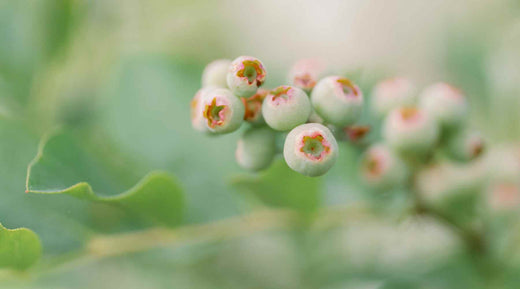Free Shipping on Orders over $75 to the Contiguous US
Free Shipping on Orders over $75 to the Contiguous US
Planting Blueberries in Grow Bags
January 16, 2025 3 min read 0 Comments

Grow bags are an excellent choice for planting blueberries. Different sizes allow you to choose your plant's footprint; they can be used anywhere from the front porch to the backyard garden up to the production-level farm or greenhouse. The constant air pruning of roots ensures that the plant will stay an appropriate size for the space you have. Blueberries are great for edible landscapes as they have long-lasting foliage, turn a lovely scarlet in the fall, and have beautiful white to pink blossoms in the spring.

QUICK FACTS ABOUT BLUEBERRIES
- Blueberries are native to North America.
- Blueberries do best in full sun but can tolerate some shade.
- Blueberries require acidic soil to produce fruit.
- Two or more varieties are needed for optimum pollination.
- Plants don't produce much fruit in the first 2 to 3 years.
- Harvest is significantly larger after 5 years.
- Blueberries grow slowly, and plants reach full size in 8 to 10 years.
- Plants require pruning every few years to shape and remove dead wood or spindly branches.

WHAT DO BLUEBERRIES NEED TO GROW?
Blueberries require a higher soil acid level (4.5 to 5.5 pH) than most garden crops. Creating the perfect soil environment is much easier in a grow bag to treat and feed them for optimum fruit production. It is also essential to provide the blueberries with a higher acid level fertilizer; 10-10-10 is best.
Getting the bags ready for transplanting requires a few ingredients. Your planting mix will be layered to mimic natural soil strata and encourage multiple levels of root growth. For 10 gallon or larger Grow Bags, including live worms is ideal. The worms will help break down larger material and provide continuous food for your plants.
The 25 gallon size is perfect for perennial plants that will need space to mature. They can even be used for dwarf fruit trees. If you are looking to grow fruit trees but feel like your clay soil is too heavy, check out the choices in our Top 10 Best Fruit Trees for Clay Soil. Blueberries can tolerate some clay soil, so if you want to eventually transplant from your grow bags into your landscape, be sure to mix some of your native soil into the bag. Once your blueberries have had a few years to develop strong roots in their grow bag, they will be better able to tolerate less-than-ideal conditions than small plants.
Check out this guide from ATL Grow on growing blueberries in grow bags.
In order to properly pot up your plants, you will need:
- One 2.5 cubic foot bag of high acidity shredded mulch
- A few flakes of rice straw (or other seed-free straw)
- Two or three 1.5 cubic foot bags of good potting soil, depending on the size of your transplants.
- Worm castings with live worms (you can buy live worms from most nurseries/hardware garden centers).

How to Plant Blueberry Plants in Grow Bags
- Start by placing 6 inches of mulch in the bottom of the bag.
- Break apart the straw flakes and put 6-8 inches of straw on top of the mulch.
- Pour ⅓ of a bag of soil on top of the straw.
- Water well. This will help push some of the air out and compress the layers.
- Add another 6 inches of straw.
- Pour another ⅓ of the soil on top of the straw and make a depression in the center to receive the plant.
Optional: At this point, add a good-sized handful of live worms to the soil.
- Place the plant in the hole and water lightly.
- Pour the remaining ⅓ of the bag of soil around the plant, ensuring that it comes up to the level of the root ball but not above.
- Finish with 3-6 inches of mulch and water well.
- Press down around the base of the plant to remove any large air pockets.
Pinching off blossoms the first year will allow the plant to dedicate its energy to establishing roots.
Blueberries should be fed a 10-10-10 fertilizer one month after planting and once a year following that.

COMPANION PLANTING WITH BLUEBERRIES
Basil and thyme make excellent companions for blueberries. They act as a living ground cover, help deter pests and give you extra crops from the space while your bushes are on their way to full size. High bush varieties can take up to 5 years to reach full production.
You can plant your blueberries near rhododendrons and azaleas as they are relatives and enjoy the same soil and fertilizer types. Keep in mind that both rhododendrons and azaleas are poisonous to humans and some domestic animals.
Featured Products
Subscribe
Sign up to get the latest on sales, new releases and more …
